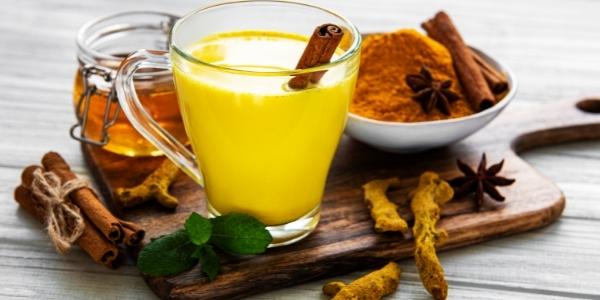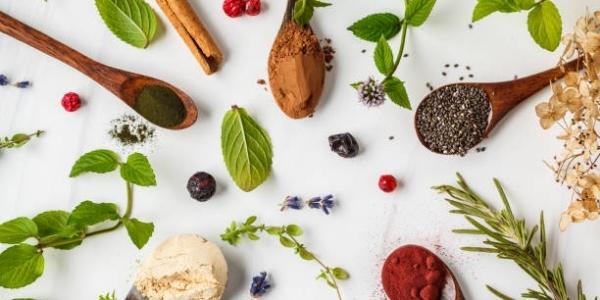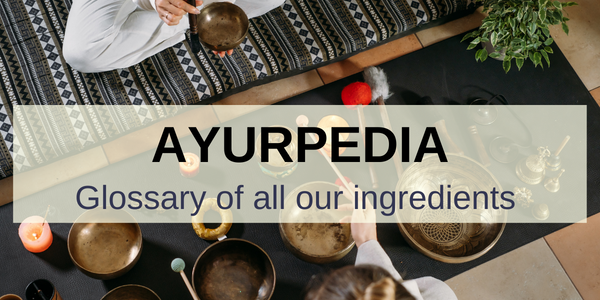
Kapha is the mildest of all dosha and it is relatively easy to balance it. However, Kapha people have a tendency toward sluggish digestion. Therefore, your diet should stimulate your Agni or the digestive fire.
Because Kapha is inherently dense, cool, oily, and smooth, foods with the opposite characteristics—light, warm, dry, and rough—can help balance excess Kapha.
The following are some suggestions to help you determine an efficient Kapha-pacifying diet.
- Consume light and easy- to -digest foods. Avoid cold, oily, heavy, and spicy foods that may lead to indigestion.
- A small amount of raw fruit, as well as salads and other raw vegetables, can help balance Kapha.
- For optimal digestion, one-third of the stomach should be filled with food, one-third with fluids, and one-third with empty space. Consuming too much food in one sitting also leads to excess heaviness.
- Extremely heavy meals and highly processed foods aggravate Kapha’ s heavy quality and should be avoided or limited.
- Hence, smaller meals, little to no snacking, and fewer sweets, are all great for Kapha.
- Consuming foods that are warm in temperature or have warming energy—as well as generously using heating spices—can improve the warmth produced by the food.
- Cooked foods are better than raw foods during the cooler months since they have a warmer energy profile and are frequently simpler to digest.
- On the other hand, foods with a cooling impact, such as cold and frozen foods or beverages, carbonated beverages, and even leftovers from the refrigerator or freezer, should be avoided or limited.
- Very drying foods, such as beans, white potatoes, dried fruits, and so on, balance Kapha's oiliness.
- In comparison to coffee, green or black teas are lighter for Kapha.
- Hard cheeses, puddings, nuts, cakes, pies, wheat, most flours, bread, pasta, and red meat, as well as deep- fried dishes that are also extremely oily, are all too heavy for Kapha.
- Coconut, cheese, fried eggs, cow's milk, wheat, almonds, and other high-fat foods should be avoided.
- Over-hydration is important to prevent because Kapha can and does retain water. As a result, try to drink only the amount of fluid your body requires, as determined by your environment and level of activity.
- Additionally, foods that are particularly moist, such as melons, summer squash, zucchini, and yogurt, should be avoided since they may be too watery for Kapha.
- Kapha responds well to a diet rich in fresh fruits and vegetables.
- Broccoli, cabbage, cauliflower, dark leafy greens, and a variety of beans are all rather rough and hence good for counteracting Kapha’s smooth, oily character.
- Smooth-textured meals and preparations, such as bananas, rice pudding, hot porridge, milk, and cheese, on the other hand, can quickly aggravate Kapha.
- Kapha is pacified by pungent, bitter, and astringent flavors, whereas sweet, sour, and salty tastes aggravate it.
- Pungent refers to the hot, searing flavor of chili peppers, radishes, turnips, raw onions, and most spices. Most spices are kapha pacifying.
- Use milder spices like cardamom, cloves, cinnamon, cumin, ginger, garlic, paprika, and turmeric in your meals.
- The powerful flavor cleanses the mouth and awakens the senses. It raises perspiration, stimulates digestion, thins the blood, liquefies secretions, cleanses the body's channels, and thins the blood.
- Bitter greens (such as kale, dandelion greens, collard greens, and mustard greens) have the strongest bitter flavor, although bitter melon, Jerusalem artichokes, burdock root, eggplant, dark chocolate, and Kapha-balancing spices like cumin, neem leaves, saffron, and turmeric all have it.
- Bitter foods should be accompanied by warming spices since the bitter flavor is gritty, drying, light, and typically reducing, all of which are beneficial to Kapha.
- Bitters help to cleanse the palette and improve taste perception. They enhance hunger, assist digestion, and aid in the absorption of fluids, lymph, muscle fat, adipose tissue, and perspiration.
- The astringent flavor is a gritty taste that dries out the mouth and may cause it to constrict (picture biting into a very green banana).
- Beans and legumes, such as black-eyed peas, chickpeas, kidney beans, lentils, pinto beans, and soybeans, are bitter and Kapha-pacifying.
- Apples, cranberries, pomegranate, broccoli, cauliflower, lettuce, popcorn, basil, coriander, dill, fennel, and other fruits, vegetables, cereals, baked goods, and spices are all astringent in flavor.
- The astringent flavor is dry, gritty, and light, and it works by lowering Kapha levels. However, it is icy, just like the bitter flavor therefore astringent foods should be paired with warming herbs and spices.
- The compressing, absorbing nature of the astringent flavor improves Kapha by toning physiological tissues and eliminating excess fluid caused by Kapha.
- The sweet flavor is cool, heavy, moist, oily, and Kapha-inducing when in excess. Hence, consume as little refined sugar as possible, as well as syrupy sweet foods.
- Try to reduce the amount of naturally sweet foods such as fruits, cereals, root vegetables, milk, ghee, yogurt, eggs, nuts, seeds, oils, and meats.
- Sweet foods aggravate Kapha’ s tendency for heaviness, obesity, lethargy, and oversleeping. They can also cause excessive mucus production, aggravate colds and coughs, and impair appetite.
- The moisturizing and greasy qualities of sour taste aggravate Kapha. The acidic flavor may cause thirst, eye heaviness, body laxity, and exacerbation of water retention or swelling. The best way for Kapha to consume sour flavor is to squeeze lemon or lime juice on a regular basis.
- Sour foods should be avoided, such as vinegar, cheese, sour cream, green grapes, oranges, pineapple, and grapefruit.
- The moist and greasy property of salt, like the sour flavor, aggravates Kapha.
- Salty taste can cause water retention, hypertension, intestinal inflammation, grey hair, wrinkles, and excessive thirst, as well as weaken the sense organs when ingesting in excess. Additionally, it can elicit similar feelings of insatiability and greed, as well as a strong desire for more flavors.
In Brief
Eat fresh, whole meals that are light, dry, warming, well-seasoned, and relatively easy to digest—ideally served warm or hot—to balance Kapha. By balancing mucus production, managing moisture levels, maintaining a suitable temperature, and supportin g normal digestion and excretion, these meals help to balance Kapha.
|
Discover your true nature and balance your life with our dosha quiz! Are you curious about which of the three Ayurvedic doshas - Vata, Pitta, or Kapha - dominate your personality and health? Then take our quiz now and uncover the secrets to a harmonious and natural lifestyle. Click the button below to take the quiz and embrace your unique wellness journey today! |












